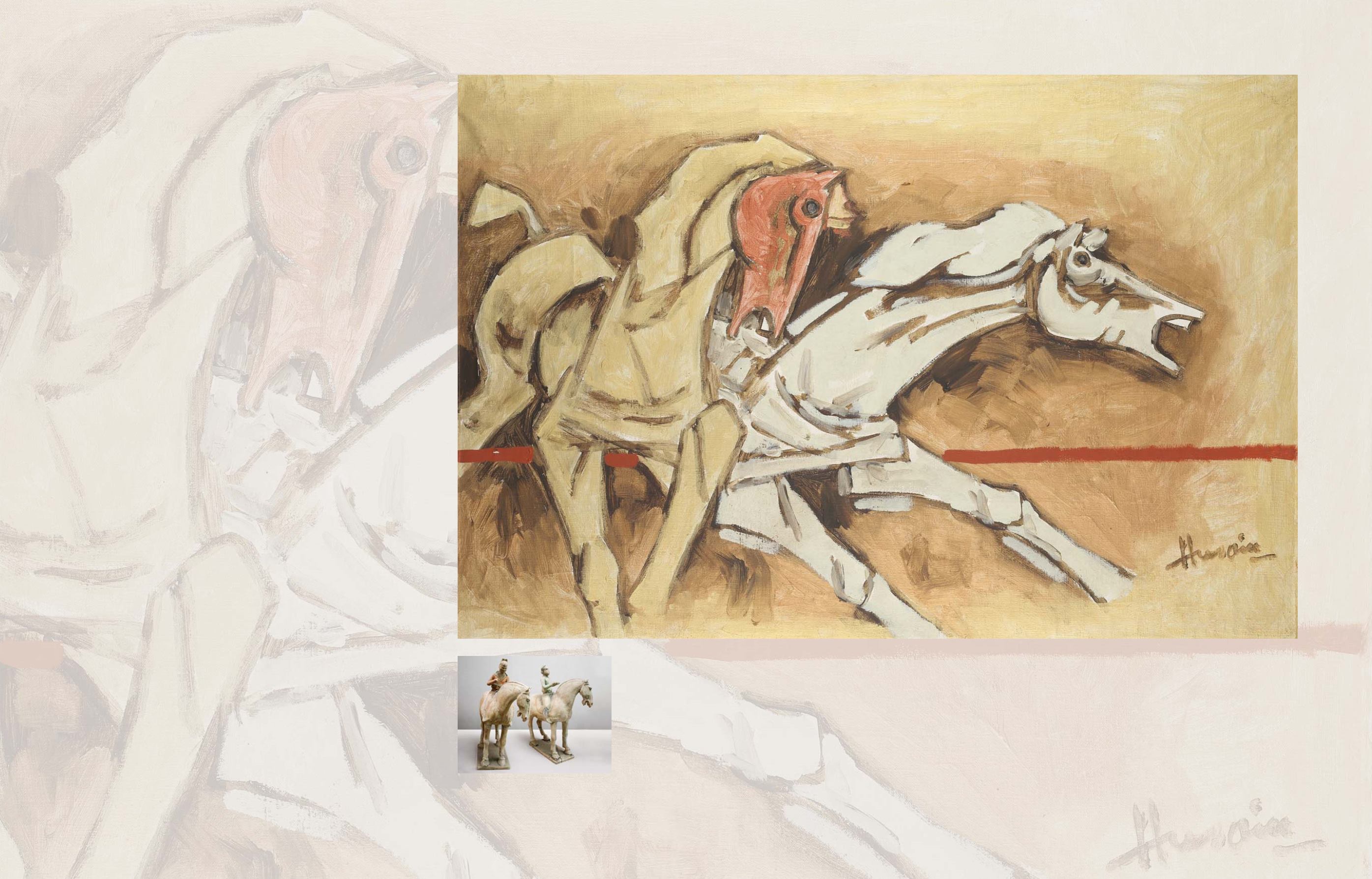

96
97
M F Husain’s horses encapsulate a complex and diverse plethora of
cultural and artistic references. He paints them with the same frenetic
energy they represent through their bucking and rearing postures. As
the subjects of Husain’s oeuvre, they are an amalgamation of both
Indian and Western influences. As a child, Husain spent time with
AcchanMian, a farrier who was his grandfather’s friend, and often fixed
iron shoes on
tonga
horses. The horse was also a significant part of the
Muharram processions he witnessed in Indore during his childhood.
Duldul, the Imam’s horse, was bedecked and venerated during these
ceremonial processions. Chinese calligraphy also informed Husain’s
bold lines, and he was aware of German Expressionist Franz Marc and
Italian sculptor Marino Marini’s horse‒themed works.
But Husain incorporated influences seamlessly to create paintings
in his own inimitable style. In the present lot, two horses gallop
with great speed and force towards a target which is outside the
frame. Husain augments their energy using thick, black outlines and
vibrant colours. Husain’s choice of palette also reveals his familiarity
with religious references. The white horse is a recurring motif in his
paintings, appearing as a solitary figure, and is sometimes grouped
with other horses. Husain was well acquainted with its significance in
Hindu mythology: as the saviour appearing at the end of time, or as
the horse drawing the chariot of Surya, the Sun God. So enthralled
was Husain by the power of the horse, that he even refers to it in his
own poetry.
Painted pottery horses
China, Tang Dynasty (618‒907 AD)
Wikimedia Commons
48
M F HUSAIN
(1913 ‒ 2011)
Untitled
Signed 'Husain' (lower right)
Oil on canvas
24 x 36 in (61 x 91.2 cm)
Rs 55,00,000 ‒ 65,00,000
$ 87,305 ‒ 103,175
PROVENANCE:
Acquired from Vadehra Art Gallery, New Delhi


















